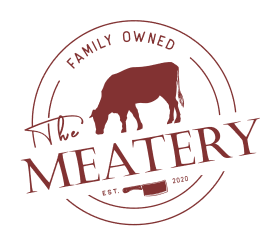Why do they call it Kobe beef?
Kobe beef derives its name from its geographic origin - the city of Kobe, capital of Hyogo Prefecture in Japan. However, the naming convention goes far beyond simple geography. This prestigious meat comes specifically from Tajima-gyu cattle, a strain of Japanese Black cattle raised according to strict regulations within Hyogo Prefecture.
The designation "Kobe beef" is strictly protected and regulated by the Kobe Beef Marketing & Distribution Promotion Association. For meat to be called Kobe beef, it must meet several specific criteria:
- The cattle must be born, raised, and processed in Hyogo Prefecture
- Only purebred Tajima-gyu cattle are eligible
- The cattle must be steers (castrated bulls) or virgin heifers
- The meat must achieve a Beef Marbling Standard (BMS) score of 6 or higher
- The meat quality score must be A4 or A5 grade
Each authentic Kobe beef cattle has a unique identification number, allowing for complete traceability from birth to processing. This rigorous certification process ensures that when people purchase Kobe beef, they're getting the genuine article that has earned its prestigious name through generations of careful breeding and strict quality control.
Cultural Significance In Japan
In Japanese culture, Kobe beef represents far more than just a premium meat product - it embodies the Japanese principles of excellence, precision, and dedication to craft. The meat holds a special place in Japanese gastronomy and is considered a national treasure, reflecting the country's meticulous attention to quality and tradition.
The cultural impact of Kobe beef extends into various aspects of Japanese society:
- Traditional ceremonies and celebrations often feature Kobe beef as a prestigious offering
- It represents Japanese hospitality (omotenashi) at its finest
- The raising of Tajima-gyu cattle is considered an art form passed down through generations
- It symbolizes Japan's commitment to maintaining high standards in food production
The respect for Kobe beef in Japan is so profound that many farmers maintain traditional practices, including playing classical music to their cattle and providing regular massages - practices that, while their effectiveness is debated, demonstrate the cultural reverence for these animals and their meat.
Kobe Beef History
The history of Kobe beef dates back to the 2nd century when cattle were first introduced to Japan as draft animals for rice cultivation. The Tajima-gyu bloodline, from which Kobe beef originates, was isolated in Hyogo Prefecture during the Edo period (1615-1867).
Key historical milestones include:
- 1868: The Meiji Restoration opened Japan to Western influences, including beef consumption
- 1883: The first recorded export of Tajima-gyu cattle
- 1940s: Development of modern grading standards
- 1983: Official establishment of the Kobe Beef Marketing & Distribution Promotion Association
During most of Japan's history, beef consumption was actually prohibited due to Buddhist influences. It wasn't until the Meiji period that beef began to be widely consumed, leading to the development of the sophisticated beef industry we see today.
Comparison With Other Wagyu Types
While Kobe beef falls under the broader category of Wagyu (Japanese cattle), it represents only a small, elite subset. Here's how it compares to other Wagyu varieties:
- Matsusaka Beef: From virgin heifers only, often considered equal to Kobe in quality
- Ohmi Beef: From Shiga Prefecture, known for its sweet flavor profile
- Sendai Beef: From Miyagi Prefecture, celebrated for its lighter marbling
The key differentiating factors include:
- Geographic specificity (Hyogo Prefecture only for Kobe)
- Genetic lineage (pure Tajima-gyu bloodline)
- Marbling intensity and quality standards
- Production volume (Kobe beef is much rarer)
How should Kobe beef be eaten?
The proper preparation and consumption of Kobe beef is considered an art form in Japan. Traditional serving methods emphasize preserving and highlighting the meat's natural qualities:
- Typically served in small portions (8-12oz) due to its richness
- Often prepared as teppanyaki or sukiyaki
- Usually cooked to medium-rare to preserve tenderness
- Minimal seasoning - typically just salt and pepper
Expert chefs recommend:
- Allowing the meat to reach room temperature before cooking
- Using high heat for a quick sear
- Resting the meat properly before serving
- Cutting against the grain in small, manageable pieces
Comparative Analysis
When analyzing Kobe beef against other premium meats worldwide, several distinguishing factors emerge:
| Characteristic | Kobe Beef | Other Premium Beef |
|---|---|---|
| Marbling | Extremely fine, evenly distributed | Variable patterns, less consistent |
| Price Point | Highest premium | Generally lower |
| Availability | Very limited | More widely available |
The unique characteristics of Kobe beef, including its unparalleled marbling, tender texture, and rich flavor profile, set it apart from other premium beef varieties. These qualities, combined with strict production standards and limited availability, justify its position as one of the world's most sought-after luxury food items Check out TheMeatery's entire selection of Kobe Beef (at an affordable price) here!









